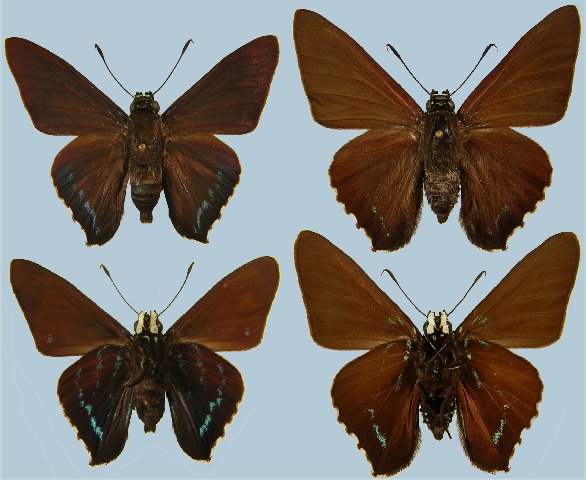Phocides pigmalion okeechobee

Photo Life History: Phocides pigmalion okeechobee
Habitat: Red Mangrove Swamps and Hammocks
Host Plants: Rhizophora mangle
Suitable Lab Host Plants:
Caring for Live Female Butterflies:
Methods of Female Oviposition:
How to Find Eggs: Eggs are light blue when laid; turning red before hatching. Can be very difficult to locate in mangrove swamps.
How to Hatch Eggs:
How to Find Caterpillars in the Field: Larvae make typical spread-wing skipper nests on red mangrove. These can be somewhat conspicuous; but can be difficult to locate because of how much host grows within the habitat. Although females will oviposit on red mangroves growing out in the relative open, I have had much better luck locating larval nests on plants found deep within the interior of the red mangrove swamps. This requires some patience to traverse because of the denseness of these swamps.
Caterpillar setups: Semi-Closed Terrarium. (Scroll to the last six photos for instructions.) Using red mangrove cuttings does not work at all for mangrove skippers as larvae perish due to decreased nutritional value of cuttings. Raising caterpillars on live red mangrove plants is highly recommended. Live red mangrove plants do not necessarily need to be potted. Plants will grow if propagules are placed in a cup of water with a lid to keep larvae from drowning. Fish fertilizer helps plants to stay healthy and grow.
Larva to Pupa: Last instar caterpillars pupate in their nests.
How to Find Pupae in the Field: Look for evidence of caterpillar feeding by looking for unique nests on red mangrove. Larvae will pupate in their nests. See photos at Phocides pigmalion okeechobee for examples.
Number of Broods per Year: Can fly year round in South Florida.
Overwintering Stage:
Overwintering Strategies:
Post-Hibernation Strategies:
Avoiding Diapause Techniques: Provide larvae with healthy host plant. Diapause prevention is not normally needed. Mature last instar caterpillars may aestivate for a few weeks before pupating.
Disease Prevention: Not normally needed. Caterpillars do not seem to get sick in a semi-closed terrarium setup if provided fresh plant.
Emergence: Emergence Container
Field Notes: Found larvae and pupae in nests on red mangroves growing along US 1 between the Florida mainland and Key Largo in March, 2000.

